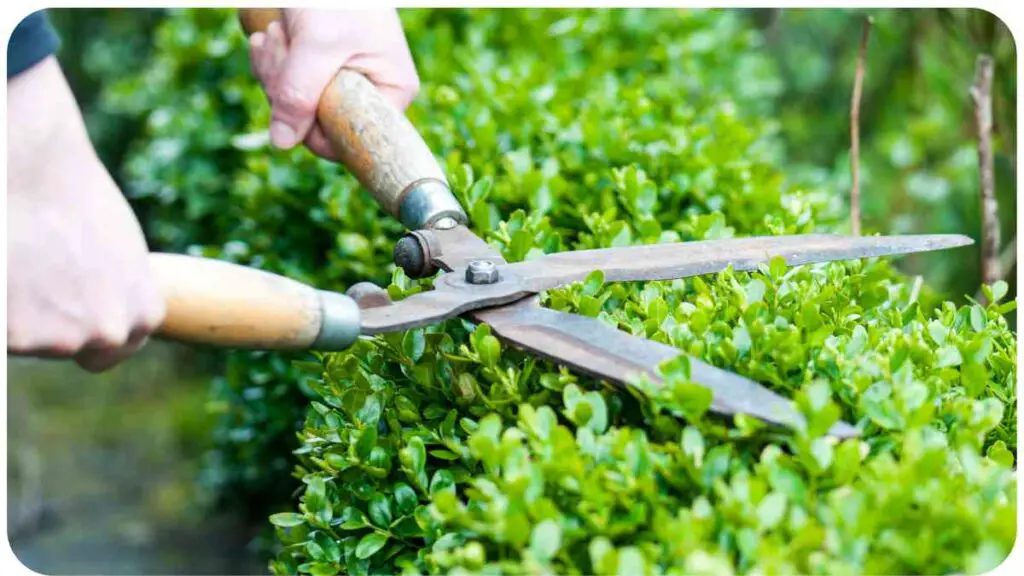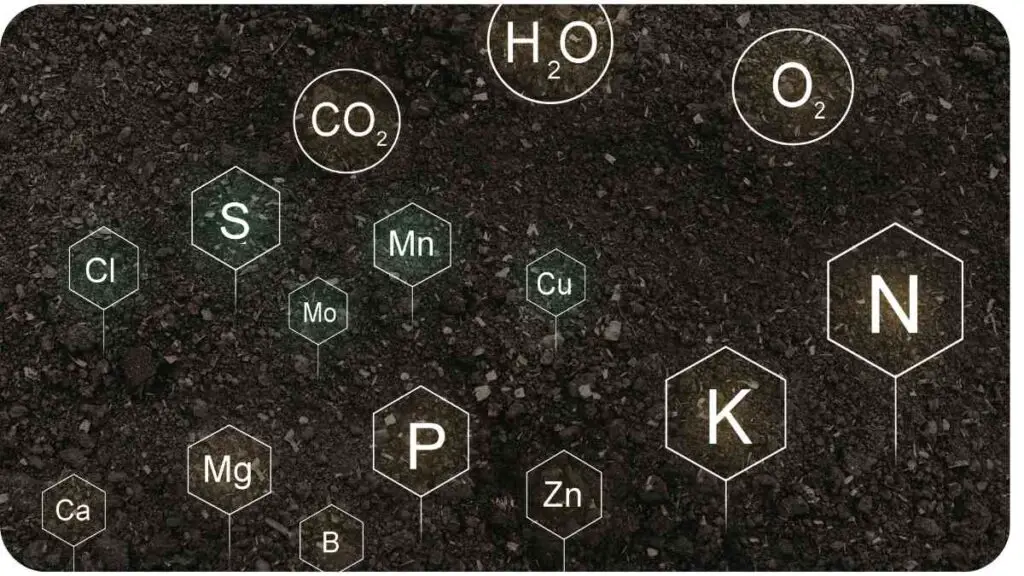Is your hedge looking lopsided or struggling to grow evenly? It might be more than just a cosmetic issue; nutrient imbalances could be at play. In this guide, we’ll dive into why your hedge isn’t growing as it should and how addressing nutrient imbalances can help you achieve a lush, evenly growing hedge.
| Takeaway |
|---|
| Proper nutrient balance is crucial for even hedge growth. |
| Identifying signs of nutrient deficiencies can help you address growth issues early. |
| Soil testing and plant tissue analysis are effective methods for diagnosing nutrient imbalances. |
| Targeted fertilization and adjusting soil pH are key strategies for correcting nutrient issues. |
| Regular monitoring and following best care practices help maintain balanced nutrients and healthy growth. |
Understanding Hedge Growth

What to Expect from Your Hedge
When planting a hedge, you might expect it to grow uniformly and maintain a consistent shape. However, several factors can affect this ideal growth pattern. Understanding what’s normal can help you better diagnose and address issues when they arise.
When dealing with uneven lawn growth, it’s crucial to understand the underlying causes. For effective solutions, consider reading more about troubleshooting uneven lawn growth. This guide offers practical advice for achieving a lush, even lawn.
Common Growth Patterns
Hedges typically grow in stages, with rapid initial growth followed by slower, more steady growth. Common issues like uneven growth can be influenced by factors such as soil quality, water availability, and nutrient levels.
The Role of Nutrients in Hedge Growth

Essential Nutrients for Healthy Hedges
Hedges need a balanced mix of nutrients to grow properly. Here’s a quick overview of the key nutrients:
| Nutrient | Function | Source |
|---|---|---|
| Nitrogen | Promotes leafy growth | Fertilizers, compost |
| Phosphorus | Encourages root development | Bone meal, phosphate rock |
| Potassium | Enhances overall health | Potash, green manure |
| Calcium | Strengthens cell walls | Lime, gypsum |
How Nutrient Imbalances Affect Growth
An imbalance in these nutrients can lead to poor growth. For example, too much nitrogen can cause excessive foliage at the expense of root development, while a lack of potassium might lead to weak plants prone to disease.
Soggy garden beds can be a major issue for plant health. If you’re facing drainage problems, check out these strategies for resolving the issue in soil not draining. Effective drainage is key to maintaining a healthy garden.
Identifying Nutrient Imbalances
Signs of Nutrient Deficiencies
Different nutrient deficiencies show up in various ways. Here’s a quick guide to identifying them:
| Nutrient Deficiency | Symptoms |
|---|---|
| Nitrogen | Yellowing of older leaves, poor growth |
| Phosphorus | Dark green or purplish leaves, stunted growth |
| Potassium | Leaf edges turn brown, weak stems |
| Calcium | Leaf curling, poor root development |
Common Nutrient Deficiency Symptoms
Observing your hedge’s leaves, stems, and overall growth can give you clues about nutrient deficiencies. For instance, yellowing leaves might indicate a nitrogen deficiency, while leaf curl could signal a calcium shortage.
Wilting plants can indicate various issues beyond just watering. To understand and address this problem, read more about the mystery of wilting plants. This resource provides insights into diagnosing and fixing plant health issues.
Diagnosing the Problem
Soil Testing
To pinpoint nutrient imbalances, start with a soil test. This will give you a clear picture of your soil’s nutrient content and pH levels, helping you tailor your corrective measures.
Plant Tissue Analysis
In addition to soil testing, plant tissue analysis can provide insights into the specific nutrients your hedge is lacking. This method involves analyzing leaf samples to assess nutrient levels.
Correcting Nutrient Imbalances
Fertilization Strategies
Once you’ve identified the deficiencies, use targeted fertilizers to correct them. For instance, if your hedge lacks nitrogen, a nitrogen-rich fertilizer can help restore balance.
Adjusting Soil pH
Soil pH can impact nutrient availability. If your soil is too acidic or alkaline, adjusting the pH can improve nutrient uptake. For instance, adding lime can raise soil pH, while sulfur can lower it.
Using Soil Amendments
Soil amendments like compost and mulch can improve soil health and nutrient levels over time. Adding organic matter helps retain moisture and provides a steady supply of nutrients.
Achieving even mulch distribution can significantly impact garden health. Learn how to address patchy mulch issues with our comprehensive guide on ensuring even mulch distribution. Proper mulch placement enhances garden growth and maintenance.
Maintaining Balanced Nutrients

Regular Monitoring
Keep an eye on your hedge’s health by regularly monitoring nutrient levels and growth patterns. Routine soil tests and plant inspections can help you catch issues early.
Best Practices for Hedge Care
Adopting best practices in hedge care, such as proper watering and mulching, can help maintain balanced nutrients and promote even growth. Regular pruning also encourages healthy, uniform growth.
Case Studies
Case Study 1: Resolving Nutrient Deficiencies in a Boxwood Hedge
One gardener noticed uneven growth in their boxwood hedge. After conducting soil tests, they discovered a phosphorus deficiency. Applying a phosphorus-rich fertilizer and adjusting soil pH helped restore even growth.
Stunted growth in raised beds can be a sign of underlying problems. For effective troubleshooting tips, refer to our detailed guide on stunted growth in raised beds. Identifying the root cause is crucial for healthy plant development.
Case Study 2: Adjusting Soil pH for Even Growth
Another gardener faced issues with a hedge’s uneven growth due to high soil acidity. They used lime to raise the pH and observed significant improvements in growth consistency and overall health.
Further Reading
Here are some additional resources to help you delve deeper into nutrient management and hedge care:
- Identifying Nutrient Deficiencies in Your Garden – Part I
This blog post provides a detailed guide on recognizing various nutrient deficiencies in garden plants, including hedges. - Excess Nutrient Doesn’t Cause Algae Growth
An insightful forum discussion exploring how excess nutrients impact plant health and growth, with a focus on algae and nutrient balance. - How to Fertilise a Hedge: Essential Tips for Healthy Growth
A comprehensive guide on fertilization practices tailored specifically for hedges, offering practical tips for achieving optimal growth.
FAQs
How can I tell if my hedge is suffering from a nutrient deficiency?
Nutrient deficiencies often manifest as discolored or distorted leaves, stunted growth, or poor overall health. Specific symptoms vary by nutrient, so observing changes in leaf color and growth patterns can provide clues.
What’s the best way to correct a nutrient imbalance in my hedge?
Start with soil testing to identify which nutrients are lacking or excessive. Based on the results, use targeted fertilizers and soil amendments to address the specific deficiencies or imbalances.
How often should I fertilize my hedge?
The frequency of fertilization depends on the type of hedge and soil conditions. Generally, a balanced fertilization schedule involves applying fertilizer once or twice a year, usually in early spring and late summer.
Can I use organic fertilizers for my hedge?
Yes, organic fertilizers can be very effective. They improve soil health and provide a slow, steady release of nutrients. Compost, aged manure, and bone meal are excellent choices.
What is the impact of soil pH on nutrient availability?
Soil pH affects how well plants can absorb nutrients. If the pH is too high or too low, it can limit the availability of essential nutrients. Adjusting the pH to the optimal range for your hedge will improve nutrient uptake and overall health.

Hi! My name is Hellen James, and I’m a landscape designer in Los Angeles. I’ve been working with homeowners and businesses to help them improve the look of their properties for over 10 years.

